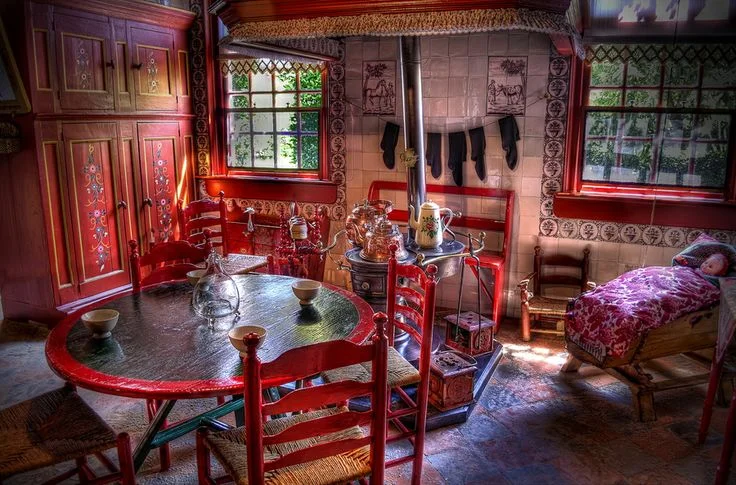The villages of Staphorst and its southern neighbour Rouveen came into existence as in the 13th century monks started to bring the bogs and swamps into culture.
All the farms were built along the long road through the bog area. Thus a lengthy row of farms was built, becoming the 7 miles long village of Staphorst-Rouveen. This phenomenon is called in Dutch: lintbebouwing (ribbon urbanization). In many parts of the Netherlands this type of village is quite common, e.g. Vriezenveen, the villages along river dykes in the Netherlands, the so-called moor-colonies in the provinces Drenthe and Groningen, as well as the German regions opposite the border.
A specialty for Staphorst is, that after a farmer's death, his land was often divided between his sons. The son who didn't inherit his father's farm built a farm-house for his own behind the other. Therefore, many pieces of farmland are very lengthy, yet narrow (e.g. 1500 x 40 metres). Originally, each piece of land was 125 metres wide.
The farms are of the traditional Low Saxon type. They have green doors and window shutters. Most farms existing now were built between 1850 and 1910.
Society
Staphorst is still a largely orthodox Calvinist village and has one of the highest church attendancy rates of the Netherlands. In 1971, Staphorst became world news due to an outbreak of polio. 39 people (mostly children) became infected with polio. Of these, five died and a number of others became disabled. 20% of residents remain unvaccinated for religious reasons.


